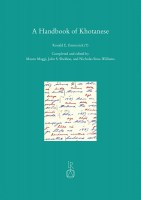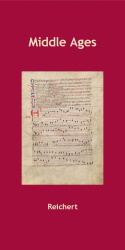Titelsuche
Herausgeber: Sheldon, John S.; Maggi, Mauro; Sims-Williams, Nicholas
A Handbook of Khotanese
Kurze Beschreibung
Ronald E. Emmerick’s Handbook of Khotanese consists of two parts: his Introduction to Khotanese, tried and tested with students over the years and here made available in print for the first time; and a systematic survey of Khotanese and the closely related Tumshuqese language. The Introduction, completed with additional chapters by the editors, offers a gradual and comprehensive introduction to Old Khotanese, with translation exercises. Late Khotanese is introduced in the final chapter of the course.Ausführliche Beschreibung
Ronald E. Emmerick’s Handbook of Khotanese consists of two parts: an Introduction to Khotanese, and a systematic survey of Khotanese and the closely related Tumshuqese language. His tried and tested Introduction to Khotanese, which has been used by many students over the years, is here made available in print for the first time. Now completed with additional chapters by the editors, it offers a gradual and comprehensive introduction to the writing system and grammar of Old Khotanese, with translation exercises largely based on excerpts from genuine Khotanese texts. A key to the exercises is provided so that the course can be used without a teacher. Though primarily designed as a textbook, the course contains much information concerning Khotanese grammar that is not available elsewhere, accounts for the Buddhist technical vocabulary largely of Indian origin that is not covered in other reference works, and includes a glossary and detailed indexes so that it can also be used as a reference grammar and a basic dictionary. Late Khotanese is introduced in the final chapter of the course. Given the large number of Indian loanwords in Khotanese, the Sanskrit equivalents are given for all Indian loanwords with indication of the immediate source languages—Sanskrit, Prakrit, or Gāndhārī—where their phonology allows identification of a specific source. Emmerick’s systematic survey of Khotanese and Tumshuqese, previously published in abbreviated form in 2009 and here expanded by the editors, forms the second part of this Handbook and includes a chapter on syntax which for the first time deals in some detail with the complex sentence and subordinate clauses. The final bibliography serves as documentation for both parts of the book and provides a starting point for further reading.
All in all, Emmerick’s Handbook of Khotanese offers an up-to-date treatment of the language, which makes free use of historical and descriptive methodology according as the one or the other seems to be of pedagogical advantage. It will be of interest and value to students not only of Iranian philology and linguistics, but also of other academic disciplines such as Indo-European and Indo-Aryan linguistics, Central Asian studies, and Buddhist philology.




 Vorwort
Vorwort

 Neuerscheinungen 2023/2024
Neuerscheinungen 2023/2024
 Gesamtverzeichnis 2023/2024
Gesamtverzeichnis 2023/2024
 Katalog Oriental Studies & Linguistics
Katalog Oriental Studies & Linguistics
 Mittelalter
Mittelalter
 Deutsche Inschriften
Deutsche Inschriften
 Musiktherapie
Musiktherapie
 Literaturen im Kontext
Literaturen im Kontext